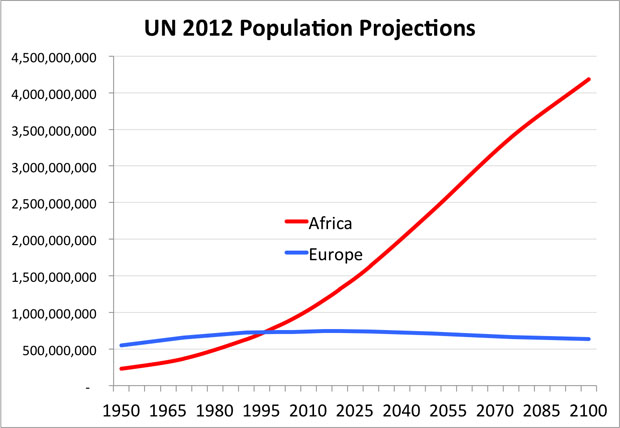One of the oddities of European geography is that a tiny bit of Spain exists on the African continent in the small communities of Melilla and Ceuta, as shown in the map below.

Naturally, these spots are a target for invasive Africans hoping to arrive in the freebie paradise on the mainland. Spain has unwisely been friendly to the aliens or, as Reuters reported in July, Spain emerges as EU’s new weak link for Africa migration.
Spain is seen by Muslims as their territory because there was an Islamic presence there in the past. So some of the Africans who are muslims may well regard their illegal presence in Spain as a righteous jihad to reclaim Al Andalus for allah.
In fact, the process of re-Islamization is well underway in some communities, according to a 2012 report from Dale Hurd.
On Monday, the New York Times front-paged a story about the stresses on the little Spanish enclaves from illegal alien Africans seeking to mooch a better life in Europe.

That article was reprinted elsewhere, so click away to read the whole thing:
‘All of Africa Is Here’: Where Europe’s Southern Border Is Just a Fence, LiveNewsCity.com, August 19, 2018
CEUTA, Spain — For most migrants from Africa, the last stage of their trip to Europe involves some sort of perilous sea crossing. At the border in Ceuta, there is just a fence.
Ceuta (pronounced say-YOU-tah) is one of the two Spanish communities on the north coast of what otherwise would be Morocco, the only places where Europe has land borders with Africa. The other enclave is Melilla, farther east along the same coast.
Here, all that separates Europe from migrants is a double fence, 20 feet high and topped with barbed wire, stretching the four miles across the peninsula and dividing tiny Ceuta from Morocco — plus 1,100 Spanish federal police and Guardia Civil officers, a paramilitary police force.
They patrol a crossing point that has come under growing pressure.
After Italy’s new government closed the door to migrants, efforts to cross into Spain have more than quadrupled in 2018, making it the No. 1 European destination for migrants from Africa.
In the week ending Aug. 12, according to the International Organization for Migration, 1,419 migrants reached Spain, compared with 359 to Italy and 527 to Greece.
But the sea crossing to Spain, through the narrow straits of Gibraltar, is more dangerous than other passages, because of strong currents where the Mediterranean Sea meets the Atlantic.
Through June, 294 migrants drowned in the western Mediterranean, compared with 224 in all of 2017 in that area.
That has made trying to breach Ceuta’s heavily guarded fence an increasingly attractive proposition, a way to enter Spain without crossing the water. On any given day, young migrant men can be seen prowling on the Moroccan side, looking for an opportunity.
Some swim around the fences where they go down into the sea. Others take short, illicit boat trips from Morocco to Ceuta. But mostly they run and climb the fence, or use bolt-cutters to cut holes in it, where they are quickly spotted by motion detectors and guards in observation towers, and usually beaten back by policemen using sticks and fists.
Salif, 20, from Cameroon, said he tried 10 times to cross the fence in the past year, until he finally made it over on his 11th effort.
As often happens, successful tries are made by what locals call “mobbing,” when hundreds of migrants surge over the fence in a large group. Salif’s group came on June 6, when 400 young men began climbing the fence at sunrise.
Two were seriously injured on the barbed wire, and hospitalized in Ceuta. Eight, including Salif, managed to get over, and were then allowed to stay in a reception center in Ceuta, awaiting transfer to the mainland.
There, they can apply for asylum, a process that can take many months or even years. Most will be turned down, and the deportation process is slow and difficult.
While people often do get hurt trying to pierce the fence, deaths are rare.
“All of Africa is here,” said Salif, ticking off migrants he has met from Angola, Nigeria, Senegal, Burkina Faso, Ivory Coast, Benin — and even some from Pakistan and Bangladesh.
And they keep coming.
“Trying to stop migrants coming from Africa with a fence alone is as fanciful as the little Dutch boy who saves his country by putting his finger in a leaking dike,” said Leonard Doyle, the spokesman for the International Organization for Migration. (Continues)
Europe better figure out how to keep Africans out or else it will become a very different place for tomorrow’s generations.
